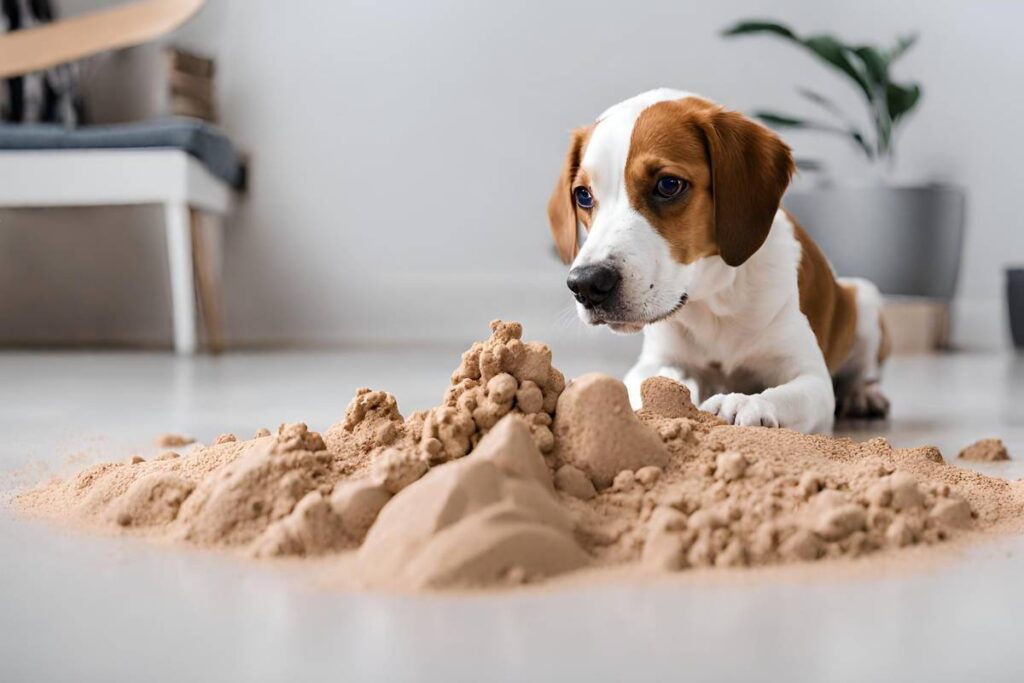Is Kinetic Sand Safe? The Truth About Smell and Toxicity

Kinetic sand: It’s mesmerizing, moldable, and oh-so-satisfying to squish between your fingers. But amidst all the fun, a nagging question often pops up: Is kinetic sand toxic?
If you’re a parent, caregiver, or simply curious about this popular sensory toy, you’ve come to the right place. Let’s uncover the truth, exploring its ingredients, potential risks, and how to ensure safe and enjoyable playtime.
What Exactly is Kinetic Sand?
Kinetic sand is a unique type of sand that feels almost magical. It sticks together, allowing you to build and shape it like wet sand, but it also flows through your fingers like dry sand.
This captivating texture is thanks to a special ingredient: dimethicone. Dimethicone is a type of silicone oil that coats each grain of sand. It’s what allows Kinetic sand to stick to itself, making it easy to mold and shape without leaving residue on hands or surfaces.
Is Kinetic Sand Toxic to Touch or Play With?
The short answer is, no. Kinetic sand is generally considered non-toxic for regular play. It’s designed to be safe for kids and adults to handle, squish, and mold to their heart’s content.
However, “non-toxic” doesn’t mean it’s edible. While small accidental ingestions are usually harmless, it’s best to discourage kids from eating kinetic sand, as we’ll discuss later in the article.
Is Kinetic Sand Poisonous? What Happens If It’s Ingested?
While kinetic sand is considered non-toxic, ingesting large amounts can cause problems.
- If a small amount is ingested, offering a few sips of any drink to rinse the sand from the mouth and into the stomach is recommended. The sand should pass in a bowel movement.
- Ingesting large amounts of Kinetic Sand can lead to gastrointestinal issues like constipation or obstruction.
- Monitor for symptoms of intestinal blockage such as bloating, lack of bowel movement, vomiting, or severe constipation.
Seek medical attention if you suspect your child has swallowed a significant amount of kinetic sand or any severe symptoms occur.

Why Does My Kinetic Sand Smell Bad?
Sometimes, kinetic sand can develop a slightly unpleasant odor. This is often due to external factors rather than the sand itself:
- Moisture: If kinetic sand gets wet, it can trap moisture and create a breeding ground for bacteria, leading to a musty smell.
- Contamination: Mixing kinetic sand with other materials, like food or playdough, can transfer odors.
- Storage: Storing kinetic sand in a non-airtight container can expose it to odors from the environment. In some cases, if Kinetic Sand is stored in a container that previously held strong-smelling substances, it can absorb those odors and develop an unpleasant smell.
How to Fix Smelly Kinetic Sand
If your kinetic sand has a funky odor, don’t toss it out just yet! Here are a few ways to revive its freshness:
- Air it out: Spread the sand out on a clean, dry surface and let it air out for a few hours or even overnight.
- Add baking soda or activated charcoal: Leave the Kinetic Sand in a closed container with the baking soda or activated charcoal for a few days, then remove it and discard the baking soda or activated charcoal. This should help neutralize the odor.
If the smell is very strong, you may need to repeat the process several times.
Can Kinetic Sand Cause an Allergic Reaction?
Kinetic Sand is generally safe and non-toxic, but it can potentially cause allergic reactions in some individuals. The sand itself is not known to trigger allergies, but other components such as dust mites or pollens that end up in the sand can cause irritation or allergic reactions.
While rare, some individuals may experience an allergic reaction to kinetic sand due to sensitivity to dimethicone or other ingredients. Symptoms may include:
- Skin rash or irritation
- Itching
- Redness
- Swelling
If you notice any of these symptoms after handling kinetic sand, discontinue use and consult a doctor.
Kinetic Sand Safety: Tips for Worry-Free Play

To ensure safe and enjoyable playtime with kinetic sand, follow these guidelines:
- Supervision: Always supervise young children when playing with kinetic sand, especially those under 3 years old.
- Avoid Ingestion: Discourage kids from eating kinetic sand. While small amounts are usually not harmful, larger quantities can cause digestive issues.
- Handwashing: Encourage hand-washing after playing with kinetic sand to prevent the spread of germs.
- Storage: Store kinetic sand in an airtight container to prevent it from drying out, getting contaminated, or absorbing odors.
- Regular Inspection: Periodically inspect kinetic sand for any signs of degradation, unusual odors, or foreign objects that may pose a risk to users.
Is Kinetic Sand Bad for Dogs?

Kinetic sand is generally non-toxic, but it’s still not recommended for dogs (or any other pets) to ingest. If your pet accidentally ingests small amounts of kinetic sand, it is unlikely to result in harm.
However, larger quantities could potentially cause digestive issues or blockages, especially if the sand hardens in the stomach. Additionally, some pets may have sensitivities or allergies to certain materials used in kinetic sand.
Therefore, it’s best to keep kinetic sand and similar substances out of reach of pets and supervise them closely when playing with such materials to prevent any potential ingestion or accidents.
If you suspect your pet has ingested Kinetic Sand, monitor them closely for any signs of distress, such as vomiting, lethargy, loss of appetite, or changes in bowel movements. Contact your veterinarian immediately for advice and potential treatment.
How Long Does Kinetic Sand Last?
Kinetic Sand has a limited lifespan, but proper storage can significantly extend its usability and lifespan. It can last for months or even years with proper care, as it does not dry out or go bad.
Its lifespan depends on several factors:
- Frequency of use: The more it’s played with, the faster it may show signs of wear.
- Exposure to moisture and contaminants: Keeping it dry and clean is crucial for longevity.
- Storage conditions: To store Kinetic Sand, it is recommended to use airtight containers or sturdy ziplock bags to prevent moisture loss and contamination. Proper storage also helps keep the sand clean and ready for play.
Is Kinetic Sand Biodegradable?
Unfortunately, Kinetic Sand is not biodegradable as it is made from synthetic materials such as silicone oil, which does not break down naturally. Proper disposal of Kinetic Sand is essential to prevent harm to the environment, as it can potentially harm wildlife if ingested and contribute to waste buildup in landfills.
However, it can be reused and enjoyed for a long time if properly cared for.
Frequently Asked Questions (FAQs)
Conclusion
Kinetic sand is a fascinating and engaging sensory toy that offers hours of creative play. While it’s generally considered safe, it’s important to be aware of potential risks and follow safety guidelines. By understanding the facts and taking simple precautions, you can ensure a worry-free and enjoyable experience with kinetic sand for both kids and adults.







2 Comments